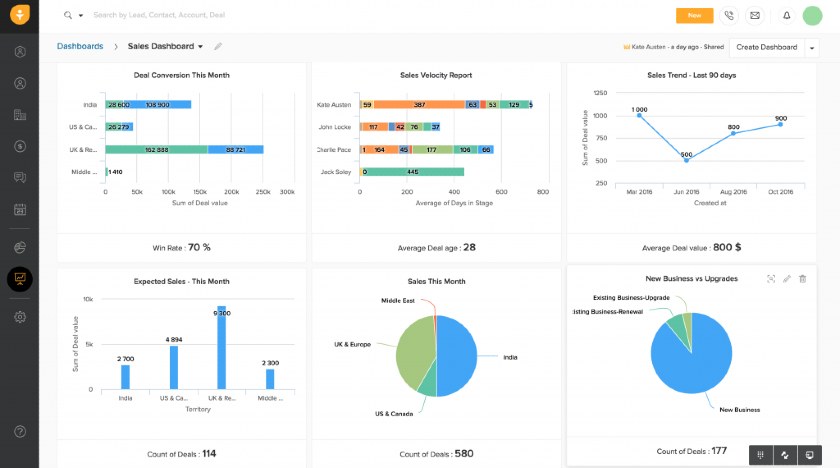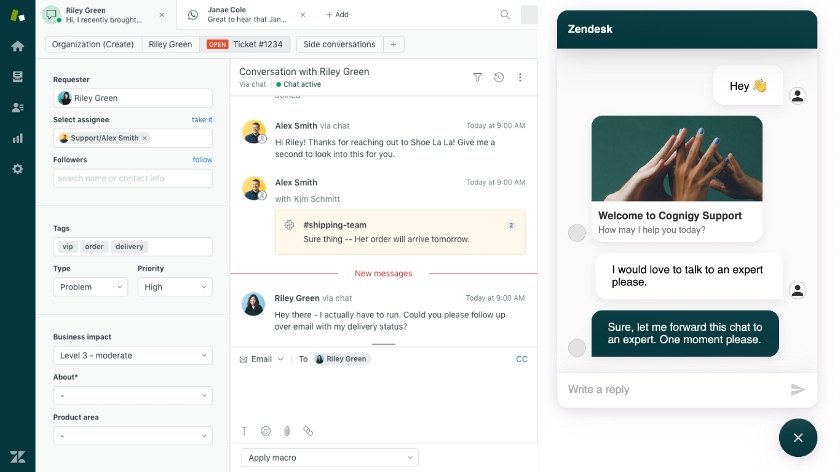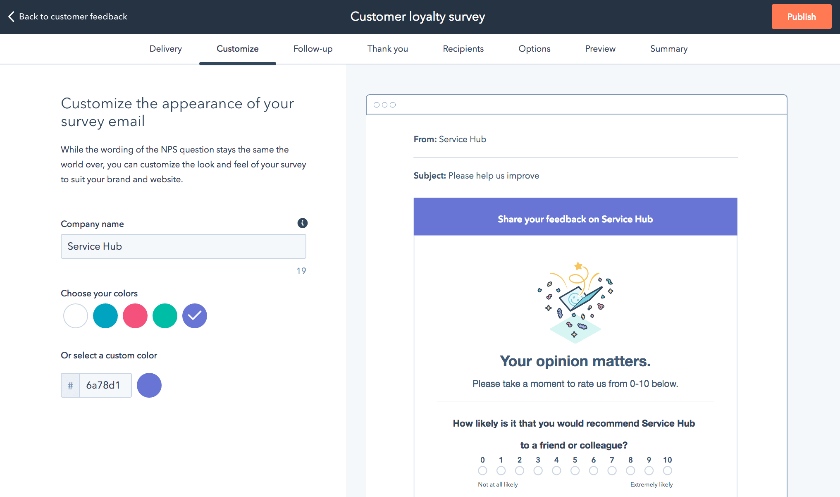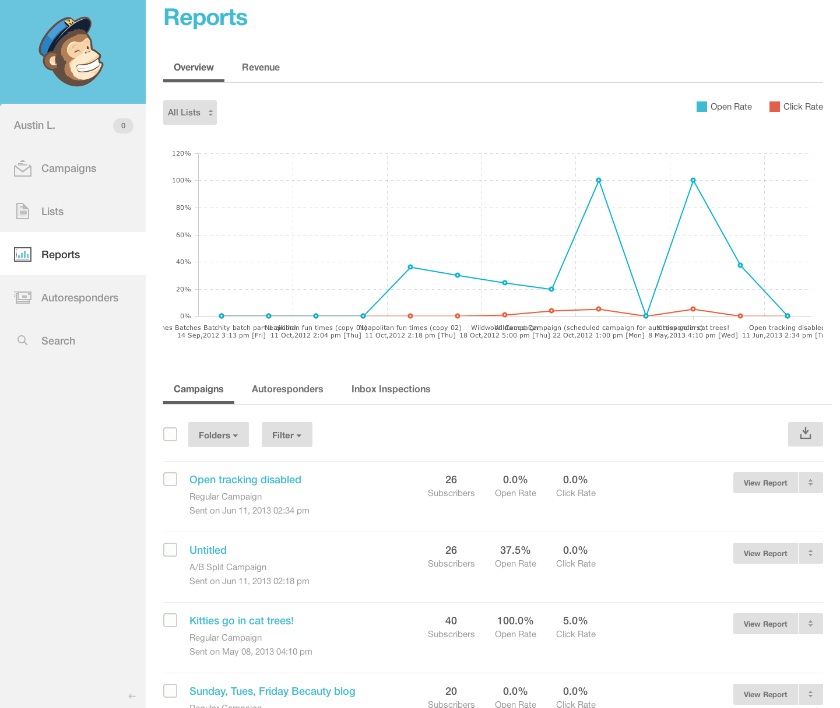Customer intelligence (CI) is the process of gathering and analyzing data from various customer interactions to generate actionable insights. It helps businesses understand their customers’ behavior, allowing them to personalize or adjust selling strategies. Customer intelligence data comes from customer relationship management (CRM) analytics, customer service data, purchase history, and web activities.
Customer intelligence can empower you to create more data-driven business decisions. In this article, we explore why your business needs it and give examples of effective ways to use it.
Defining Customer Intelligence & Its Importance
Customer intelligence offers highly personalized insights into your customers’ behavior, preferences, and actions. It answers the “who,” “what,” “when,” “where”—and most importantly, the “why” about your customers.
Understanding your customers on a deeper level gives you a profitable advantage because you can adjust the different aspects of your business. It empowers you to design your selling approach in a way that best resonates with them. Data collected from various client intelligence sources are crucial in building your customer persona.
Did you know? Sixty-six percent of consumers expect brands to understand their individual needs—putting more emphasis on why customer intelligence is essential. In fact, 73% of consumers say their customer loyalty is impacted by how well a company understands their individual needs.
Customer intelligence influences strategies when developing products, creating campaigns, crafting marketing messages, and discovering your customers’ pain points. Collecting client intelligence data and translating it into your business operations will enhance your customers’ purchasing journey. It can also contribute to business growth, as well as increase customer retention and loyalty.
Client intelligence is instrumental when creating content in the various stages of your customer’s journey.
Types of Customer Intelligence Data
Below are the types of customer intelligence data you need to collect to understand your customers or target market better:
Sources of Customer Intelligence Data
Actionable, insight-driven, and well-rounded customer intelligence data comes from an ecosystem of available customer data sources. Insights from these sources contribute to enriching customer profiles, so businesses can tailor their services, products, marketing, and customer service in the most effective way.
Below are samples of data sources where you can get insights to contribute to your client intelligence collection strategies.
Customer intelligence (CI) platforms are one of the most advanced and sophisticated tools for gathering data about your customers. It uses big data through artificial intelligence (AI) to automatically personalize the experience for customers. For example, when a customer visits your website, it can display messages or items based on their interests or past purchases. It can also enable advertisements on social media based on sites they have visited.
Interested in learning more about the role of AI in providing personalized services to your customers? Read our ultimate guide on how AI improves customer service.
IBM Predictive Customer Intelligence is a CI platform that personalizes customer experience by making relevant recommendations. Suggestions are generated through AI and based on the customers’ buying behavior and web activities in real-time, including social media. It creates customer behavior models, so businesses can offer hyper-personalized content that would most likely convert into a sale.
Using CRM analytics to gather CRM intelligence helps businesses identify where most of their leads are coming from or which communication channels they use are most effective. It lets them identify top customers through sales figures, determining their most and least engaged customers. CRM system analytics also help businesses see their top-performing products and services, guiding sales agents on which ones to offer customers.
For instance, Freshsales is a CRM that offers visual reports that allow users to look into various areas of their business, including revenue and lead sources. It enables them to track customer interactions across multiple communication channels. Data reports also allow sales teams to monitor deals over different time periods and see how they convert, evaluate sales trends, and analyze win and loss rates to develop better selling strategies.

Freshsales’ analytics tools can capture various data, including conversion rates and revenue sources. (Source: Freshsales)
Pro tip: Explore more ways how CRM software can improve your customer service operations.
Data from customer service software is also a vital source of customer service intelligence. It offers businesses a look at the sentiments of their customers about their products, services, and level of support.
By looking at past customer logs, previous issues, and reviews, businesses can identify the areas they need to improve when providing customer support. It also shows the communication channels their customers use the most, enabling them to reach out to them more effectively.
For example, Zendesk is sales software that keeps detailed communication history with customers, including responses from actual representatives and customer interactions with chatbots. A customer’s profile is updated with recent cases, issues, feedback, or comments based on their last interaction with a customer service representative. It also records scores or ratings for the support they received.

Zendesk provides users with reports and analysis on customers’ sentiments toward the service they receive. (Source: Zendesk)
One of the most effective ways to gather highly accurate customer data is to send surveys or feedback forms. They make it easy to ask your customers targeted questions you want specific information on, such as insights on existing products and services or suggestions on products they want you to develop.
For example, HubSpot Service Hub has a customer feedback tool that lets you run various types of surveys, which you can easily send to your email distribution list. It provides a pool of ready-made templates users can further customize based on their preferred aesthetics or branding.

HubSpot Customer Hub has a survey feature that lets users send questionnaires to their customers to gather insights on various topics. (Source: HubSpot)
Interested in learning more ways how to assess and gather customer feedback? Read our in-depth guide on how to measure customer satisfaction.
The way your customer interacts with your email marketing campaigns says a lot about their behavior and preferences. Using data from your email marketing tool, you can see the types of content with high engagement, links they clicked that led to a purchase, and emails that didn’t get much traction.
Knowing your customers’ preferences gives you a good idea of the offerings that convert and the types of content that garner interest. In fact, 72% of consumers say they only engage with marketing messages that are personalized and tailored to their interests.
For instance, Mailchimp provides rich insights into how customers interact with the user’s email marketing activities, whether collectively or individually. It has growth, engagement, and revenue reports that help users discover patterns in their audience’s behavior and see what’s working with their marketing activities. It also shows them what actions led to a purchase and lets them leave notes about customers’ preferences when integrated with your CRM.

Mailchimp efficiently tracks the engagement rate of recipients to email marketing campaigns, including open and click rates. (Source: Mailchimp)
Tracking customers’ web activities is an effective way to gather client intelligence. By monitoring your individual customers’ web activities, you can collect insights about their interests and preferences. You can also identify the top pages they visited on your website, links clicked, and products viewed and purchased. It not only gives you an idea of the kinds of products that are most popular, but also the kind of content that attracts their attention.
Agile CRM’s web analytics capabilities let users track their web visitors and see in-depth, contact-level customer analytics. Its web analytics include various data like the source of a visitor, pages visited, time spent on each page, and browser or device used. This helps users segment customers and visitors based on activity and interests, enabling them to run highly targeted promos and identify hot leads when they browse their websites.
Agile CRM tracks the web activities of customers, including pages visited. (Source: Agile CRM)
How to Leverage Customer Intelligence
Understanding your customers’ demographic, behavioral, psychographic, and transactional profiles enables you to improve different aspects of your business. Below are some ways to leverage and maximize your customer intelligence data:
Bottom Line
Customer intelligence strategy is a crucial part of running a company. In a business landscape saturated with players competing for the attention of potential customers, standing out from the crowd is a must for your business to grow. To do this, offer products and services that address their specific needs and develop content that engages them. Having access to accurate customer intelligence analytics helps you hone your message and best serve your customers.
Monitoring customers’ social activities assist businesses in better understanding their customers’ wants and needs. Social media encourages people to express themselves or voice opinions about brands and services, thus, it’s a great place to listen. Businesses often find out what products their customers are raving about or complaining about, which can help them create content or advertisements that interest their target market.
For example, Sprout Social provides insights into your customers’ social activities, including their engagement with your content, direct interaction with your team, or personal interests. Through its integration with popular social media sites, including Facebook, Instagram, and LinkedIn, users can add notes to enrich customers’ profiles, which provides context to future interactions.
Sprout Social shows conversations about your company or brand, giving you an idea of what your customers think of you. (Source: Sprout)